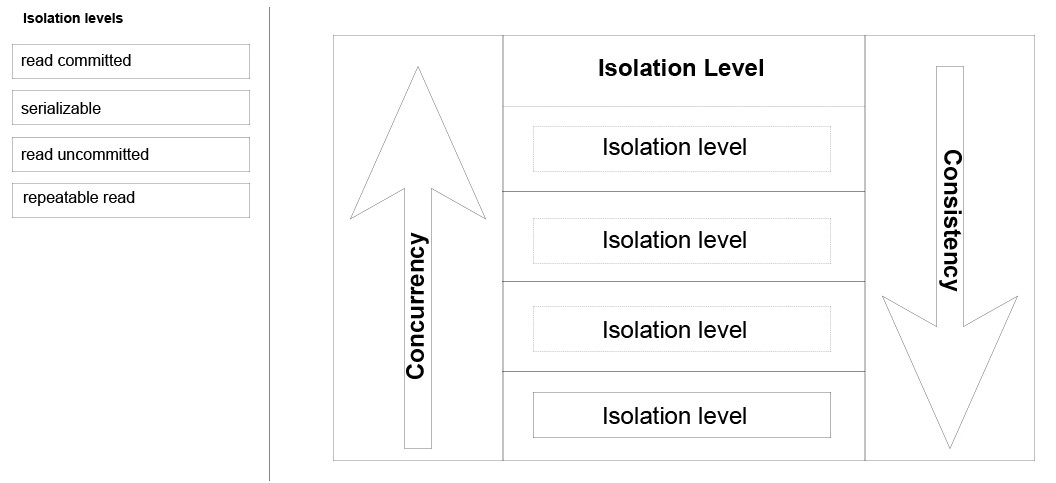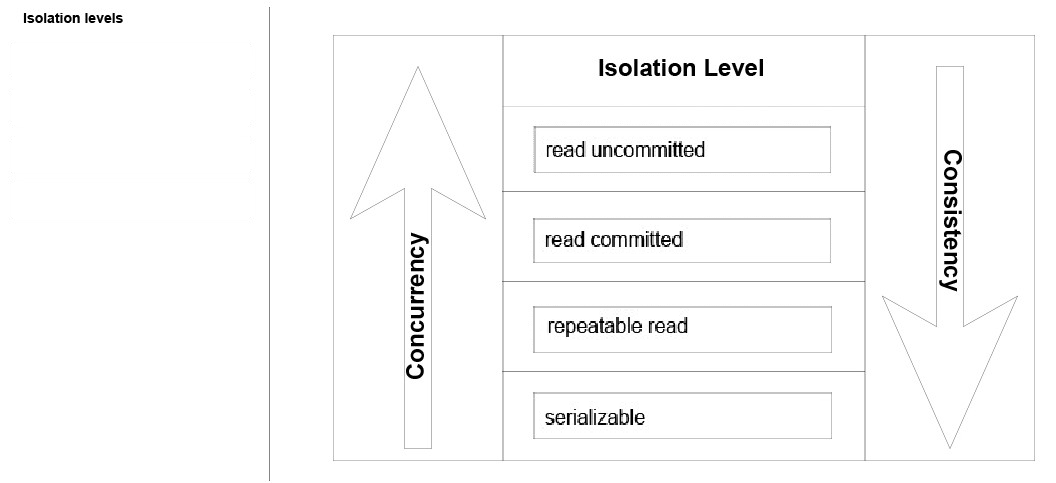

DRAG DROP -
You are analyzing the performance of a database environment.
Applications that access the database are experiencing locks that are held for a large amount of time. You are experiencing isolation phenomena such as dirty, nonrepeatable and phantom reads.
You need to identify the impact of specific transaction isolation levels on the concurrency and consistency of data.
What are the consistency and concurrency implications of each transaction isolation level? To answer, drag the appropriate isolation levels to the correct locations. Each isolation level may be used once, more than once, or not at all. You may need to drag the split bar between panes or scroll to view content.
Select and Place:

strikersree
Highly Voted 4 years, 12 months agokimalto452
4 years, 6 months agolalaplatoo
Most Recent 4 years, 5 months agokimalto452
4 years, 6 months agocrogers
4 years, 9 months agokimalto452
4 years, 6 months ago